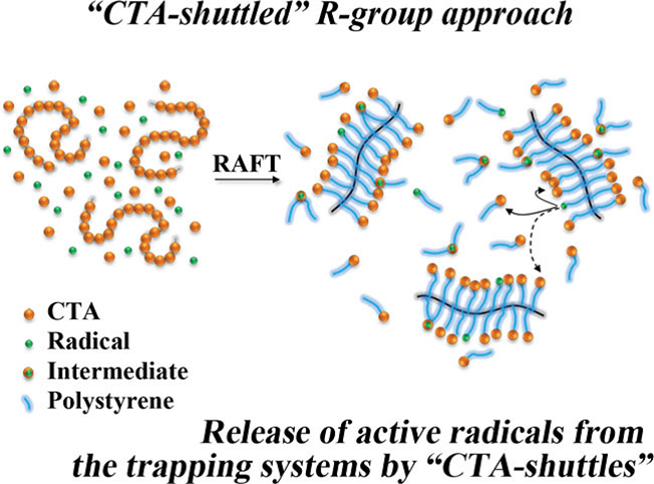Revival of the R-Group Approach: A ¡°CTA-shuttled¡± Grafting from Approach for Well-Defined Cylindrical Polymer Brushes via RAFT Polymerization |
| Time£º2014-01-21 09:09 |
Zhicheng Zheng, Jun Ling, and Axel H. E. Müller. Macromolecular Rapid Communications, 2014, 35: 234-241.
Abstract: The synthesis of well-defined cylindrical polymer brushes (CPBs) from a linear polymer backbone with a high density of RAFT functionalities (“grafting from” approach) is challenging when the chain transfer agent (CTA) is attached to the backbone via its R-group. It is proposed that the difficulties of the R-group approach in controlling the grafting polymerization are induced by the “entrapment” of active free radicals within individual growing CPBs. A facile “CTA-shuttled” R-group approach overcoming this entrapment effect is developed, and used to synthesize well-defined CPBs with polystyrene or poly(tert-butyl acrylate) branches and core–shell CPBs with polystyrene-block-poly(N-isopropylacrylamide) branches. The polydispersity index (PDI = 1.23) of the obtained CPBs with polystyrene branches is much lower than that from the conventional R-group approach (PDI = 2.18). Monte Carlo simulations confirm that the advantage of the “CTA-shuttled” R-group approach consists in the release of the active radicals from the trapping CPB systems.

|
Read£º2400
|
